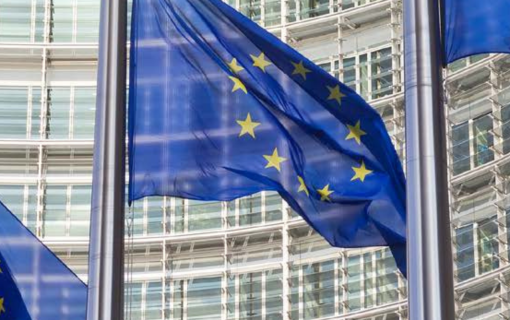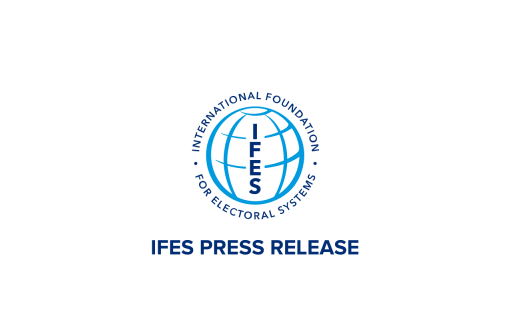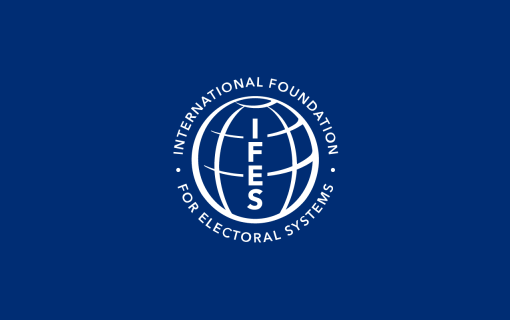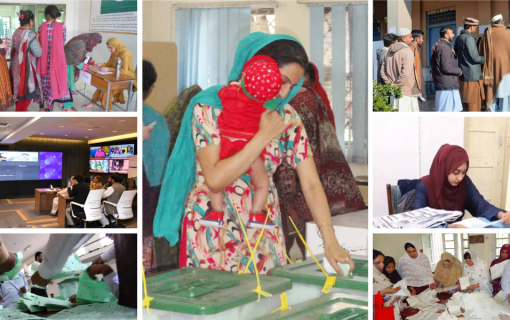How is it Made? Voter Education Campaign Edition
“Get your CNIC – get yourself registered to vote…because every vote counts!” Motivational voter education messages are instantly recognizable; they permeate the airwaves, and televisions in democratic countries, especially before an election. While short, the messages are clear and they are an indispensable tool to educate and mobilize large numbers of citizens. Most people only see the final product, but there is so much that goes into developing the message before it is broadcast on screens across the country. Behind the 30-second clips, there are over 370 man-hours and more than 30 people working to get the message out. For anyone who has ever wondered, “how is it made?” here is a behind-the-scenes look at how the team at the IFES office in Pakistan created a campaign encouraging women to register for a computerized national identity card (CNIC) and register to vote.
Identifying the Problem
In Pakistan, citizens must have a CNIC to register and vote. Currently, the electoral roll does not include about 20% of eligible Pakistani women, and that same gap was also reflected in a survey conducted by IFES in 2013 that explored the barriers inhibiting women’s CNIC registration. According to the survey, approximately 19% of women in the country did not have a CNIC, compared to only 7% of men. Since voter registration is directly linked to CNIC possession, increasing the percentage of women with a CNIC should positively affect the number of women registered to vote. As more women register, opportunities for their participation in the electoral process will increase.
Crafting the Messages
Rather than relying on common assumptions, IFES used some of the findings of their survey to develop targeted messages that would resonate with unregistered women. The survey showed that only 52% of young women between 18-24 years of age have a CNIC. Campaign materials were written to appeal to this group by creating strong female characters who deliver the main messages. The survey also revealed that women are dependent on family members to accompany them to register. When developing the scripts, IFES portrayed male family members willingly helping their relatives and added several facts to address common misconceptions about the process identified through the survey.
IFES worked with a local communications firm to write the scripts for the radio and television clips and design the campaign print material. It took about three months to finalize scripts for four different short clips in four languages and seek the Election Commission of Pakistan’s endorsement.
To the Studio and Beyond
Since Pakistan is such a diverse country, clips for each province were filmed separately to include elements unique to each. The director cast actors with accents, mannerisms and complexions seen in the different locations, and varied the style of clothing so viewers would identify with the characters.
The director, actors, cameramen, sound crew and lighting team spent almost two weeks filming until they had enough material for the clips. The team shot hundreds of takes, experimenting with different gestures, inflections, lighting and actors. During post-production, technicians sifted through hours of footage, spliced together the best takes and added voiceovers until the clip was finally ready to air.
According to Ghalia Aymen, the production director, the hard work is worth it in the end. “Bringing education to the masses through film has always been my passion. Making films for entertainment is not worthwhile to me,” she said.
Because of the efforts of the dozens of people working in the writers’ room, on stage, and behind the scenes, women across Pakistan will learn the importance of having a CNIC and will take the time to register and vote.Watch the video via YouTube.









